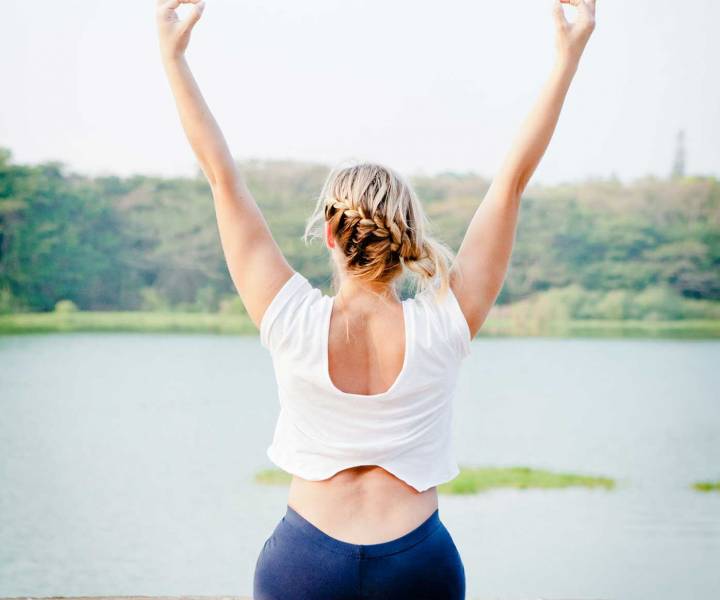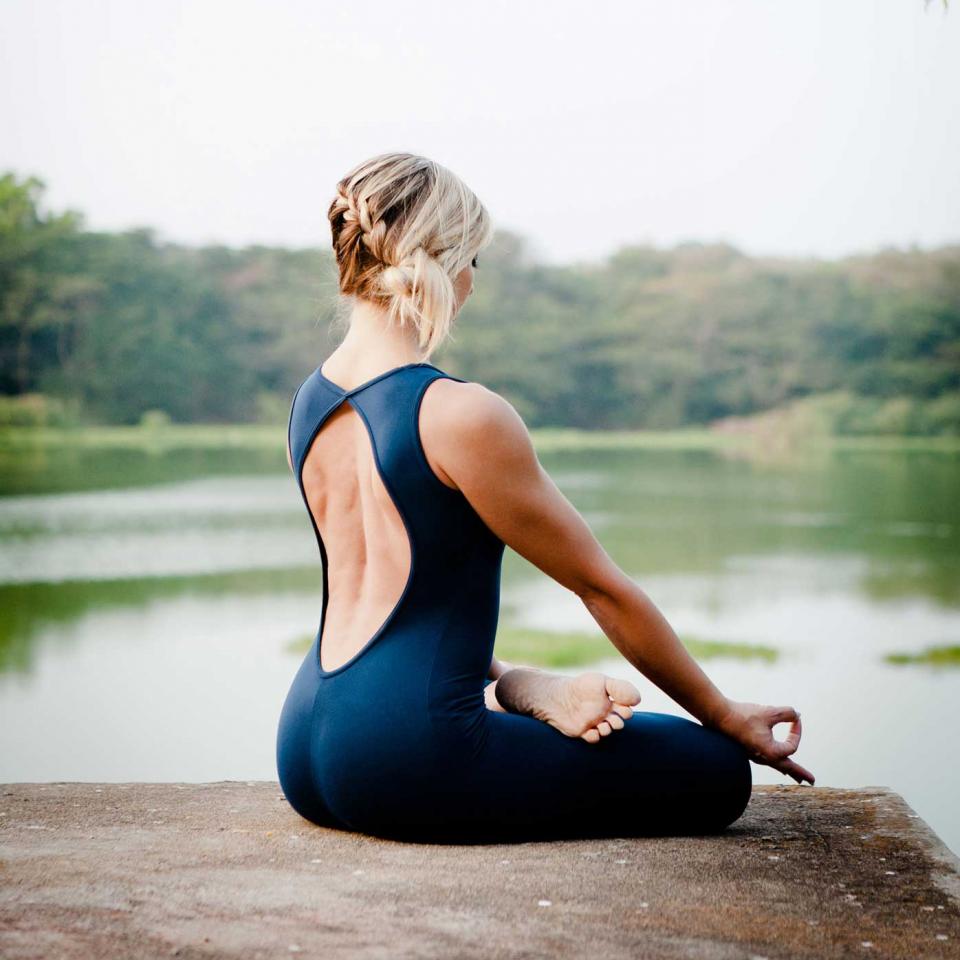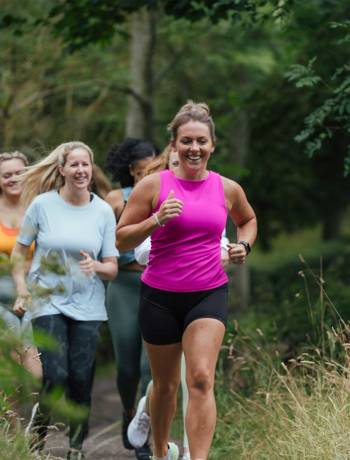Health
How to improve your posture
by Hannah Ebelthite

Good posture makes you look taller, slimmer, tter and stronger, and protects your back and joints. Hannah Ebelthite finds out why this year’s biggest tness trend is all about sitting tall...
Sit up straight, shoulders back, stop slouching, pull your tummy in, tuck your bottom under, don’t cross your legs... achieving a healthy posture used to be a chore. But today, it’s the wellness world’s favourite buzzword. Classes in barre (which combines ballet, yoga and Pilates) are booming; the luxury spa at London’s Connaught Hotel has launched body-posture analysis and classes, while Italy’s LeFay Spa, on Lake Garda, offers a five-day posture retreat to leave you ‘taller and younger’. Tatler recently hailed chiropractor Caragh Pittam one of its Top 10 happiness gurus, thanks to her ability to reset spines.
There are apps and wearable devices, such as UpRight and Lumo Lift, that buzz to tell you if you’re slouching. Maybe we’re all beginning to realise that if we want to stay strong, supple, flexible and pain free as we age, we need to go back to basics.
What is good posture?
Spinal experts agree that to be in good alignment, your head should be well supported by your body, your spine and joints shouldn’t be compressed, you should be able to breathe freely and to move easily. ‘Forget the bolt-upright, stiff position,’ says physiotherapist and clinical Pilates teacher Lyndsay Hirst. ‘This will only cause tightness, tension and fatigue. Your position should feel effortless.’Antonella Cavallone, of the Society of Teachers of the Alexander Technique, agrees. ‘Postural balance is something we’re born with,’ she says. ‘The head is naturally balanced over the neck and spine, the load is supported and you can move freely. But we pick up habits throughout life that interfere with this.’
Bad position affects everything
Undoing these habits is far from easy as they stem from the way we live, she continues. Hunching over computers for hours on end can cause the spine to become curved and muscles to shorten and stiffen, leaving you more prone to injury, aches and pains. Being overweight puts pressure on your muscles and joints. In fact, bad posture affects everything from your ability to walk and run to how easily you breathe – sitting with curved shoulders can compress your airways and leave your rib cage in an unnatural position, adding pressure to your lungs. That’s why posture enemy number one is our sedentary lifestyle. Sitting on chairs, living our lives at desks, in cars and on sofas, craning our necks to look at screens – all bring to mind images of a misaligned body. ‘When the head is out of balance with the neck and spine – usually held too far forwards – the body is subjected to excessive force,’ explains Cavallone. ‘It’s compressed throughout the spine and joints and you lose the natural, anti- gravitational reflexes that keep you upright, so your muscles take over and are held in tension. When posture is improved, joints move more freely, muscles lengthen and are relieved of tension. The lungs have more space to breathe. When the rib cage isn’t pushing into the pelvis, the diaphragm can work better, too.’

Learning how to move easily
So how best to embrace the better-posture trend? Taking up a form of exercise that focuses on opening, releasing and improving posture, such as yoga or Pilates, will help it to feel second nature. If you’re drawn to a more intuitive approach, try classes in the Alexander Technique, where a qualified teacher will observe your movement and posture. But a good place to start is by practising. Whenever you remember, check your posture and keep shoulders, elbows, hips and knees aligned and your head up. And remember the health benefits that standing up straight will bring – you’ll be at less risk of injury, backache and arthritis, your digestion will improve as your internal organs will be under less pressure, you’ll look younger, thinner and taller as you stretch your body upwards, and you’ll even appear more confident.
Harvard Business School psychologist Amy Cuddy studied how posture can affect our mood and found people who adopted open, upright, outwards-facing poses felt more confident and powerful than those who were closed, slumped and inwards. ‘I notice a real change in the physical and mental health of clients as their posture improves,’ confirms Lyndsay Hirst. ‘Someone depressed and introverted naturally starts standing proud. Good posture builds confidence.’
Three posture tricks to try:
1. Standing
Many of us stand with our weight on our toes, with our pelvis tilted back and bottom out. ‘Shift your weight back into your heels,’ says Roger Frampton, a personal trainer and fashion model whose TEDx talk Why Sitting Down Destroys You has had more than 2million hits. ‘Then think about pressing your heels together. You’ll feel your glutes and core switch on, supporting your whole body. This is a great way to demonstrate that muscles follow movement which is why we need to focus more on how we move rather than just moving more.’ Pilates teacher Lyndsay Hirst advises: ‘Imagine a headlight on your breastbone and try to keep it shining forwards. Tuck your chin down a little and move your head back. If you had a plumb line 2hanging from your ear lobes, it should touch behind, not in front of, your collarbones.’
2. At your desk
‘When sitting at your screen, pay attention to your sitting bones,’ says Alexander Technique teacher Antonella Cavallone. ‘Become aware of sitting back on them, rather than leaning into your knees. Allow your shoulders to release and open away from each other. When your shoulder girdle is compressed inwards, your chest and collarbones are pulled down and raising your arms to type becomes an effort. So think about bending your elbows to raise your hands to the 3keyboard, rather than leading with your shoulders.’ WHEN YOU GET A CHANCE... ‘Lie on your tummy, forehead resting on a folded towel, hands by your sides,’ says Lyndsay Hirst. ‘Draw your tummy in, raise your arms a few inches off the floor. Lift your head, keeping your spine in line, roll your shoulder blades together and down your back. Exhale as you lift up, then inhale back down again. Repeat 10 times. This chest lift strengthens the back extensors, which will help reverse our tendency to slump.’
3. When you get a chance
‘Lie on your tummy, forehead resting on a folded towel, hands by your sides,’ says Lyndsay Hirst. ‘Draw your tummy in, raise your arms a few inches off the floor. Lift your head, keeping your spine in line, roll your shoulder blades together and down your back. Exhale as you lift up, then inhale back down again. Repeat 10 times. This chest lift strengthens the back extensors, which will help reverse our tendency to slump.’












